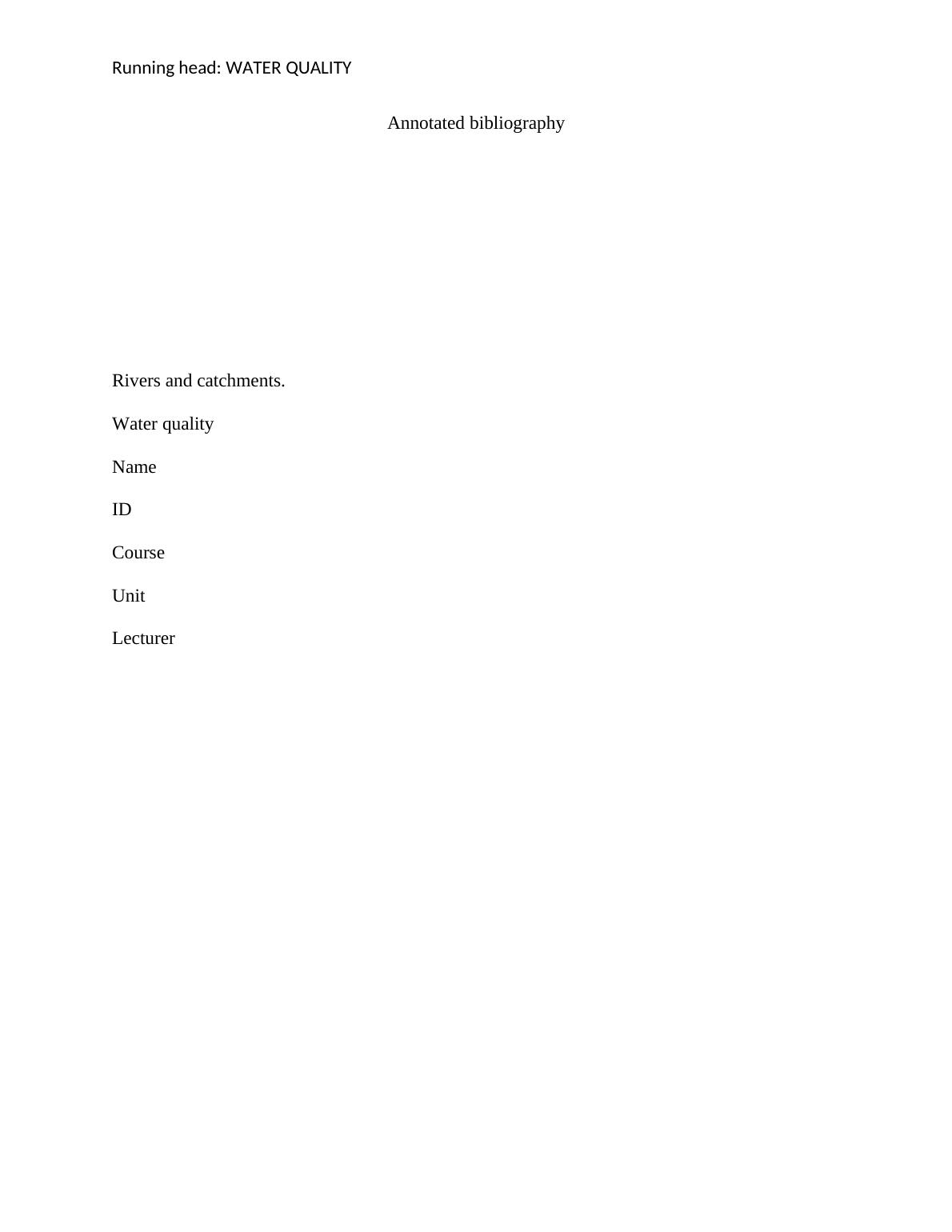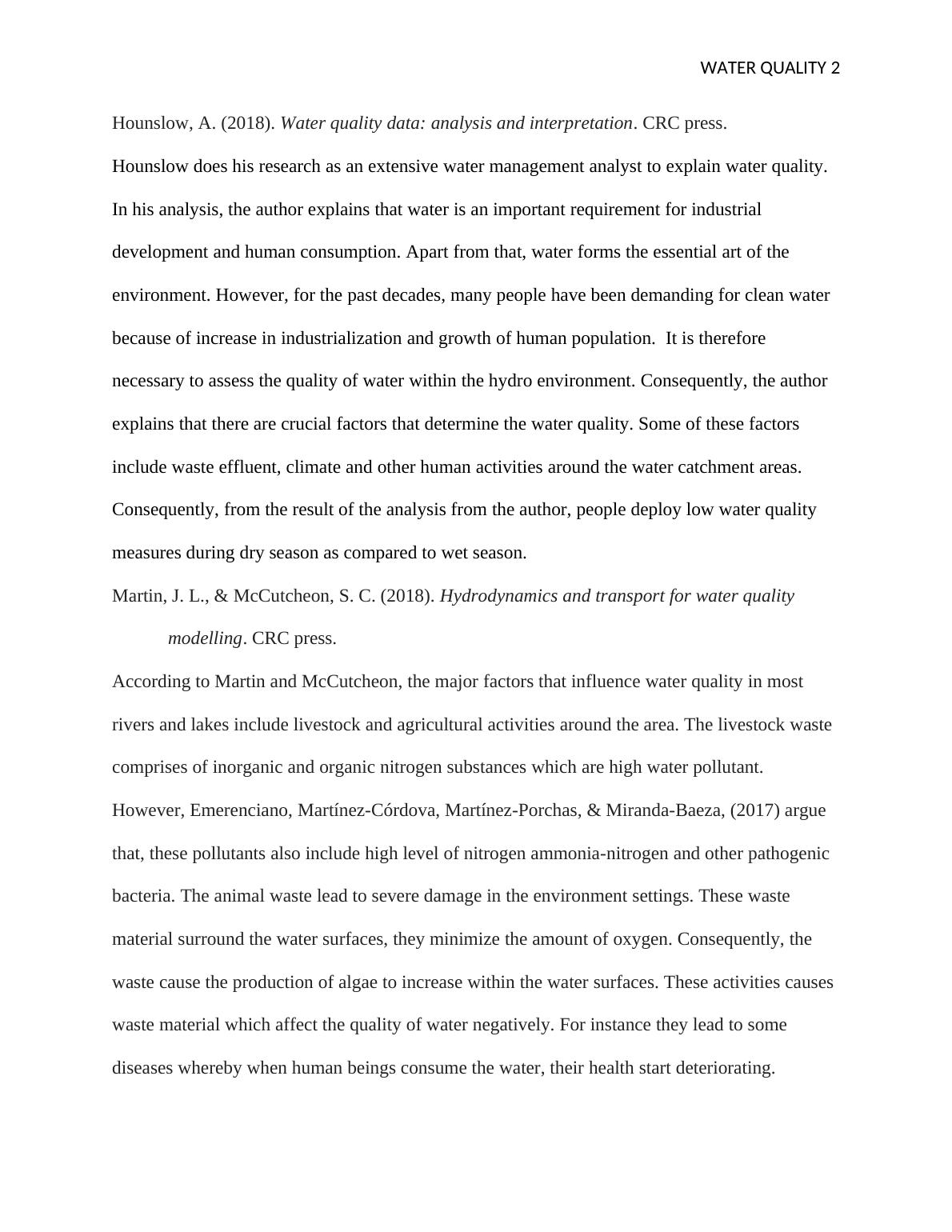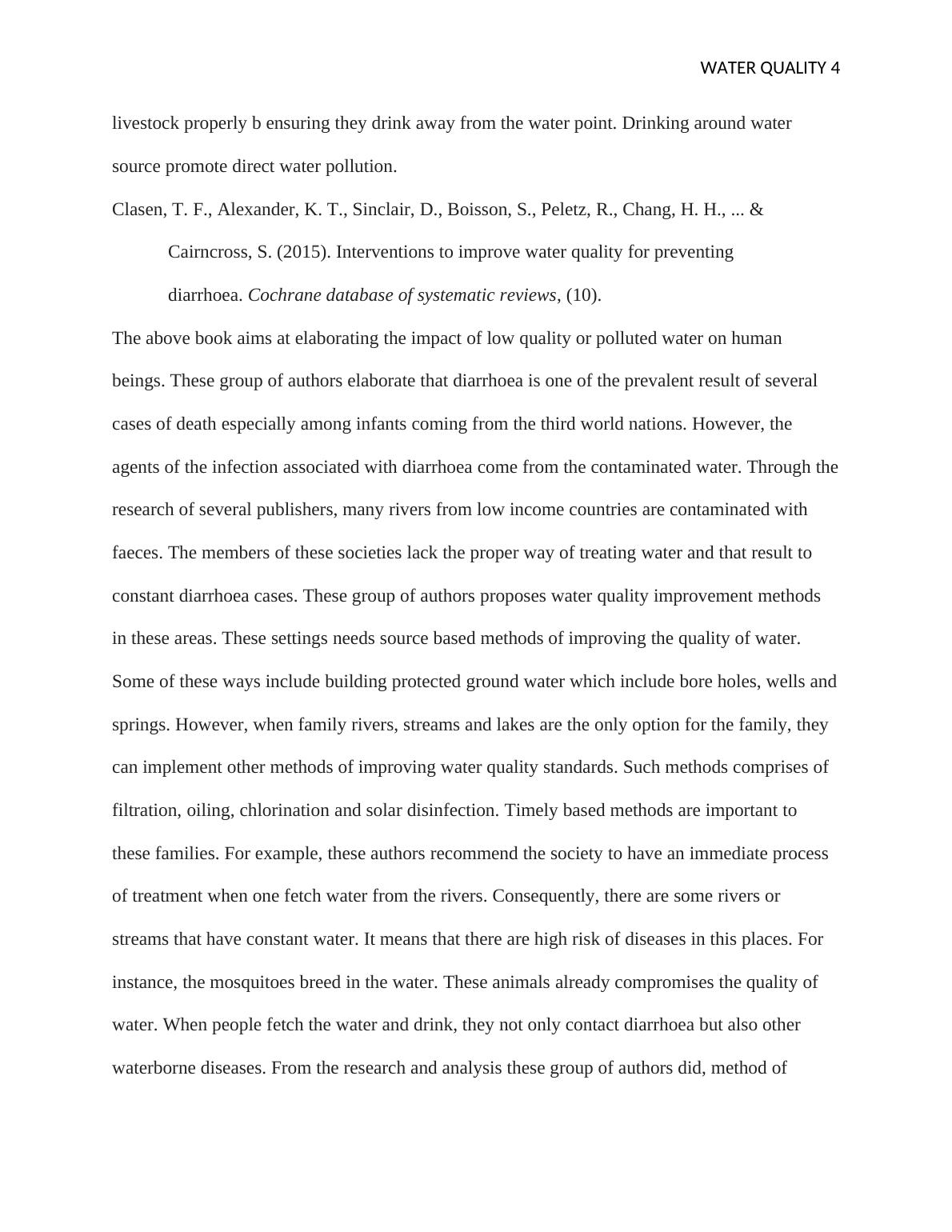WATER QUALITY 11. : WATER QUALITY.
Compile an annotated bibliography on the topic of water quality in rivers and catchments. Include at least 20 relevant references from peer-reviewed scientific papers in appropriate scientific journals. Provide a short summary for each reference, presented in a logical order with sub-headings where appropriate. Use a Database search engine like Web of Science or Scopus to ensure the citations are from reputable scientific journals. Include at least one older, seminal paper and one very recent paper in the bibliography.
Added on 2022-10-14
WATER QUALITY 11. : WATER QUALITY.
Compile an annotated bibliography on the topic of water quality in rivers and catchments. Include at least 20 relevant references from peer-reviewed scientific papers in appropriate scientific journals. Provide a short summary for each reference, presented in a logical order with sub-headings where appropriate. Use a Database search engine like Web of Science or Scopus to ensure the citations are from reputable scientific journals. Include at least one older, seminal paper and one very recent paper in the bibliography.
Added on 2022-10-14
End of preview
Want to access all the pages? Upload your documents or become a member.




